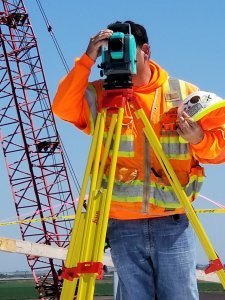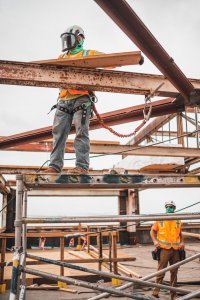COR Certification in Canada: The Complete Guide
Do you want to make sure your employees are safe on the job? Se-Cor Health and Safety Programs can help! Our programs offer a variety of safety and health benefits for your employees, including on-the-job training, worker’s compensation, and more. You can trust Se-Cor to ensure that your employees are safe and healthy while they’re working. Contact us today to learn more!
Eligibility for Cor
 To be eligible for a Certificate of Recognition COR, an employer must have more than 10 employees in the workplace. COR is awarded to organizations that successfully implement a health and safety program that meets specific provincial standards. Remember, it’s up to you whether or not you choose to participate in COR; it’s a voluntary program that can contribute to your company’s health and safety efforts. The employers are eligible for a Certificate of Recognition (COR) if they develop health and safety programs that meet established standards. Cor is awarded to organizations who successfully implement a health and safety program that meets specific provincial standards, meaning larger companies typically qualify for the certificate while smaller businesses receive the SECOR designation. As an employer, you must complete the following steps: Once your COR is in place, there are many other benefits to participating in a health and safety program. Here are some of those advantages: Cor has several components that make up their programs including on-the-job training for employees and managers; worker’s compensation insurance coverage rebates.
To be eligible for a Certificate of Recognition COR, an employer must have more than 10 employees in the workplace. COR is awarded to organizations that successfully implement a health and safety program that meets specific provincial standards. Remember, it’s up to you whether or not you choose to participate in COR; it’s a voluntary program that can contribute to your company’s health and safety efforts. The employers are eligible for a Certificate of Recognition (COR) if they develop health and safety programs that meet established standards. Cor is awarded to organizations who successfully implement a health and safety program that meets specific provincial standards, meaning larger companies typically qualify for the certificate while smaller businesses receive the SECOR designation. As an employer, you must complete the following steps: Once your COR is in place, there are many other benefits to participating in a health and safety program. Here are some of those advantages: Cor has several components that make up their programs including on-the-job training for employees and managers; worker’s compensation insurance coverage rebates.
Implement a health and safety management system
 You must have a health and safety management system in place to be successful with COR Certification. A management system is a systematic approach to managing your company’s health and safety risks. There are many components that make up a good health and safety management system, but the most important element is having an effective incident response plan in place. Your incident response plan should include the following: The goal of your incident response plan is to minimize the impact of an injury or illness. By creating a plan that has been created and tested by your staff, you will ensure the effectiveness of your program. Step 3. Implement a health and safety training system Your organization must have an effective method for communicating risk prevention to employees on a regular basis so they can identify potential hazards in their work environment before problems occur which could expose them to unsafe conditions or activities at work such as lifting heavy objects, operating dangerous machinery, or working with chemicals. Your health and safety training system should include the following: training for the specific work they do, training for all employees who work with the specific work, and providing refresher training as needed. Having the proper class of license for the vehicle types you drift. To comply with the regulations, you must have a certain level of training for your employees. Step 4. Implement safety policies and procedures that address specific hazards in their work environment. Making sure all of your employees are aware of this information is very important so they can make well-informed decisions when working around hazardous areas at job sites or on the shop floor to ensure their own personal health and safety as well as that of other workers who may be present at the job site. Once you implement these policies and procedures, your employees must follow them to eliminate any potential hazards in their work environment. Your safety programs should include safety training for all workers who are exposed to hazardous conditions or activity. Your company’s health and safety program is an integral part of its overall business operations which includes compliance with OH&S regulations as well as any federal regulations such as dangerous goods transportation and federally regulated businesses such as banks, trucking, or transportation.
You must have a health and safety management system in place to be successful with COR Certification. A management system is a systematic approach to managing your company’s health and safety risks. There are many components that make up a good health and safety management system, but the most important element is having an effective incident response plan in place. Your incident response plan should include the following: The goal of your incident response plan is to minimize the impact of an injury or illness. By creating a plan that has been created and tested by your staff, you will ensure the effectiveness of your program. Step 3. Implement a health and safety training system Your organization must have an effective method for communicating risk prevention to employees on a regular basis so they can identify potential hazards in their work environment before problems occur which could expose them to unsafe conditions or activities at work such as lifting heavy objects, operating dangerous machinery, or working with chemicals. Your health and safety training system should include the following: training for the specific work they do, training for all employees who work with the specific work, and providing refresher training as needed. Having the proper class of license for the vehicle types you drift. To comply with the regulations, you must have a certain level of training for your employees. Step 4. Implement safety policies and procedures that address specific hazards in their work environment. Making sure all of your employees are aware of this information is very important so they can make well-informed decisions when working around hazardous areas at job sites or on the shop floor to ensure their own personal health and safety as well as that of other workers who may be present at the job site. Once you implement these policies and procedures, your employees must follow them to eliminate any potential hazards in their work environment. Your safety programs should include safety training for all workers who are exposed to hazardous conditions or activity. Your company’s health and safety program is an integral part of its overall business operations which includes compliance with OH&S regulations as well as any federal regulations such as dangerous goods transportation and federally regulated businesses such as banks, trucking, or transportation.
Baseline Audits
 Baseline audits are conducted to assess your current safety and health management system. The audit will identify areas where improvements can be made. The baseline audit is completed when you are getting COR Certification for the first time. When you undergo a subsequent audit, the results of the previous audit will serve as a baseline against which any new deficiencies or changes can be evaluated. The purpose of this document is to serve as an outline for your company’s health and safety program, it should not be used as a template for conducting an actual audit.
Baseline audits are conducted to assess your current safety and health management system. The audit will identify areas where improvements can be made. The baseline audit is completed when you are getting COR Certification for the first time. When you undergo a subsequent audit, the results of the previous audit will serve as a baseline against which any new deficiencies or changes can be evaluated. The purpose of this document is to serve as an outline for your company’s health and safety program, it should not be used as a template for conducting an actual audit.
Action Plans
This document should be used as a guide when developing and implementing your company’s health and safety program. Secor certification Alberta health and safety programs in Canada are essential for maintaining COR. Action plans are a formal way to evaluate an employer’s OHS management system and make improvements. The goal of action plans is to introduce measurable and meaningful improvements to the OHS management system, which can help maintain COR while also working to enhance a health and safety program. A good OHS program includes effective management leadership, a firm commitment from all involved, and a commitment to its long-term sustainability.
Small Employer Certificate of Recognition (SECOR®)
The Small Employer Certificate of Recognition (SECOR®) is a nationally recognized program that recognizes and awards businesses with fewer than 19 or 10 employees who have implemented an effective health and safety management system. To be eligible for the SECOR®, your company must: Be in compliance with all federal, provincial/territorial, and municipal OHS regulations. Have an effective H&S management system in place that meets or exceeds all the requirements of a regulated entity.  Have an active OHS program, which includes risk assessment and control systems to identify risks, implement controls where necessary, conduct periodic inspections and audits, and have a system for conducting follow-up on identified issues with employees or contractors. The SECOR® is not intended as an alternative to compliance or enforcement action by provincial/territorial governments but rather recognizes companies that are in full compliance with all relevant OHS regulations. The SECOR® is a voluntary program, with no requirements to participate in the process of becoming recognized or receiving recognition. The only requirement for businesses seeking recognition is that they have an effective H&S management system and meet all applicable provincial/territorial standards (e.g., Occupational Health and Safety Regulation). To be eligible for the SECOR®, your company must: Be in compliance with all federal, provincial/territorial, and municipal OHS regulations. Have an effective H&S management system in place that meets or exceeds all the requirements of a certifying partner.
Have an active OHS program, which includes risk assessment and control systems to identify risks, implement controls where necessary, conduct periodic inspections and audits, and have a system for conducting follow-up on identified issues with employees or contractors. The SECOR® is not intended as an alternative to compliance or enforcement action by provincial/territorial governments but rather recognizes companies that are in full compliance with all relevant OHS regulations. The SECOR® is a voluntary program, with no requirements to participate in the process of becoming recognized or receiving recognition. The only requirement for businesses seeking recognition is that they have an effective H&S management system and meet all applicable provincial/territorial standards (e.g., Occupational Health and Safety Regulation). To be eligible for the SECOR®, your company must: Be in compliance with all federal, provincial/territorial, and municipal OHS regulations. Have an effective H&S management system in place that meets or exceeds all the requirements of a certifying partner.
SECOR / COR CERTIFICATION
Whether you’re a small or large business, it’s important to have a certification program in place that meets provincial legal standards. The Certificate of Recognition (COR) program is one such Certification that allows businesses to satisfy these standards and improve their health and safety while reducing costs.  The COR Program is an occupational safety and health accreditation program that verifies a fully implemented safety and health management system that meets national standards. This makes the COR Program particularly beneficial for those who are looking to improve their reputation as an organization concerned with employee health and well-being. However, it’s important to remember that the COR only applies to organizations with 10 or more employees, while the SECOR applies specifically to smaller companies with 10 or fewer employees. In either case, having this certification helps your company stand out from others in its field and shows your commitment to improving worker health and safety practices.
The COR Program is an occupational safety and health accreditation program that verifies a fully implemented safety and health management system that meets national standards. This makes the COR Program particularly beneficial for those who are looking to improve their reputation as an organization concerned with employee health and well-being. However, it’s important to remember that the COR only applies to organizations with 10 or more employees, while the SECOR applies specifically to smaller companies with 10 or fewer employees. In either case, having this certification helps your company stand out from others in its field and shows your commitment to improving worker health and safety practices.
PRE-QUALIFICATION & TRAINING
Most Certifying partners in Canada require the owner of the business to take at least one training course. The course is designed to tell owners what their responsibilities are for workers’ health and safety and in some cases social wellbeing. Some certifying partners require the worker to take auditor training so they can do the audits for the company. You must have a worker’s compensation account in order to apply for Cor or Se-Cor certification.
Practical Solutions for a Safer Workplace
The Occupational Safety and Health (OSH) is responsible for all aspects of health and safety in the workplace, with a focus on the primary prevention of hazards. Its goal is to prevent accidents and injuries from work-related activities.  One way to make sure your workplace is safe is to have a certified occupational health and safety program (COR® ). The COR® program offers the ultimate accreditation for companies that have implemented a comprehensive health and safety program, ensuring that only safe acts are committed. Enforcing health and safety regulations by inspecting workers and ensuring that only safe conditions are found is also an important part of having an effective OHS program. Partnership programs exist between employer representatives (worker representatives in some provinces)and the OH&S to help improve injury prevention outcomes in the workplace. By working together, both parties can identify ways to reduce injuries at work.
One way to make sure your workplace is safe is to have a certified occupational health and safety program (COR® ). The COR® program offers the ultimate accreditation for companies that have implemented a comprehensive health and safety program, ensuring that only safe acts are committed. Enforcing health and safety regulations by inspecting workers and ensuring that only safe conditions are found is also an important part of having an effective OHS program. Partnership programs exist between employer representatives (worker representatives in some provinces)and the OH&S to help improve injury prevention outcomes in the workplace. By working together, both parties can identify ways to reduce injuries at work.
How Do I Become COR Certified?
Find the certifying partner that is right for your type of operations Register your company for the Cor program at the certifying partner. Take the required training courses the certifying partner requires you to take Develop your health and safety manual in the format that meets the certifying partner’s requirements Implement your Policies and Procedures of your Program (usually done by safety meetings) Do a baseline audit to determine what percentage of the program is implemented From the audit create a list of deficiencies that have not been implemented yet Correct all the deficiencies and do another audit to see where you stand If you passed the second audit then it is time to get ahold of the certifying partner and arrange an audit. Once the audit has been completed fix all the deficiencies and you have done.
How Long Will It Take To Get COR Certified?
The time it takes to get COR certified varies depending on the certifying partner. However, most certifying partners will ask companies to complete a registration process and take various training courses before undergoing an audit. Typically, it takes about six months for a company to receive certification from its certifying partner. It is important to note that some provinces require a year of documentation before they will do an audit on you.
Do I Need COR For My Business?
To earn a financial incentive through the WCB Partnerships in Injury Reduction program, and to be recognized as meeting the highest safety and health standards, most Alberta corporations require contractors who bid on projects to have a valid Certificate of Recognition (COR). The COR program is a popular HSMS that helps companies achieve their health and safety goals while reducing costs. While it is voluntary, having a valid COR is often seen as an important part of maintaining high safety and health standards in your business.
Is COR Certification in Alberta the Same as COR Certification in Canada?
 No, COR certification in Canada is different from COR certification in Alberta. For example, the safety and health program requirements for both programs are different. In addition, the WCB Partnerships in Injury Reduction (PIR) program offers financial incentives to companies that have a valid Canadian certificate of recognition (COR). However, it is often mandatory for companies bidding on government contracts to hold a Canadian COR.
No, COR certification in Canada is different from COR certification in Alberta. For example, the safety and health program requirements for both programs are different. In addition, the WCB Partnerships in Injury Reduction (PIR) program offers financial incentives to companies that have a valid Canadian certificate of recognition (COR). However, it is often mandatory for companies bidding on government contracts to hold a Canadian COR.
Does COR Give Your Organization a Competitive Advantage?
Yes, COR certification can give your organization a competitive advantage. For example, some companies choose to have their contractors hold a valid Canadian certificate of recognition (COR) in order to receive the WCB Partnerships in Injury Reduction (PIR) financial incentive. Additionally, having a valid COR may make it easier for you to find qualified contractors and suppliers.
What are Se-cor Health and Safety Programs In Canada?
The Small Employer Certificate of Recognition or Se-cor Health and Safety Programs In Canada is a certification program that helps organizations achieve their health and safety goals while reducing costs. The program is voluntary, but many Alberta corporations require contractors who bid on projects to have a valid Certificate of Recognition (COR). What are the requirements for COR Certification in Canada? The requirements for COR Certification in Canada are different from the requirements for COR Certification in Alberta.
How do Se-cor Health and Safety Programs In Canada work?
 The Se-cor Health and Safety Programs In Canada work by training your employees on how to identify, avoid and report health and safety hazards. In addition, you will need to implement a hazard awareness program which includes ensuring all employees are aware of the potential for dangers in their workplace. Finally, you will also need to have an effective accident prevention program in place which minimizes injuries caused by accidents. orientations of new workers is also an important part of the SE-cor safety program. All these programs focus on the prevention of incidents, illnesses, and injuries.
The Se-cor Health and Safety Programs In Canada work by training your employees on how to identify, avoid and report health and safety hazards. In addition, you will need to implement a hazard awareness program which includes ensuring all employees are aware of the potential for dangers in their workplace. Finally, you will also need to have an effective accident prevention program in place which minimizes injuries caused by accidents. orientations of new workers is also an important part of the SE-cor safety program. All these programs focus on the prevention of incidents, illnesses, and injuries.




